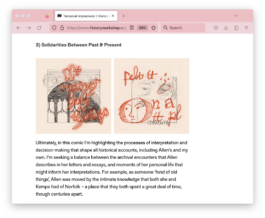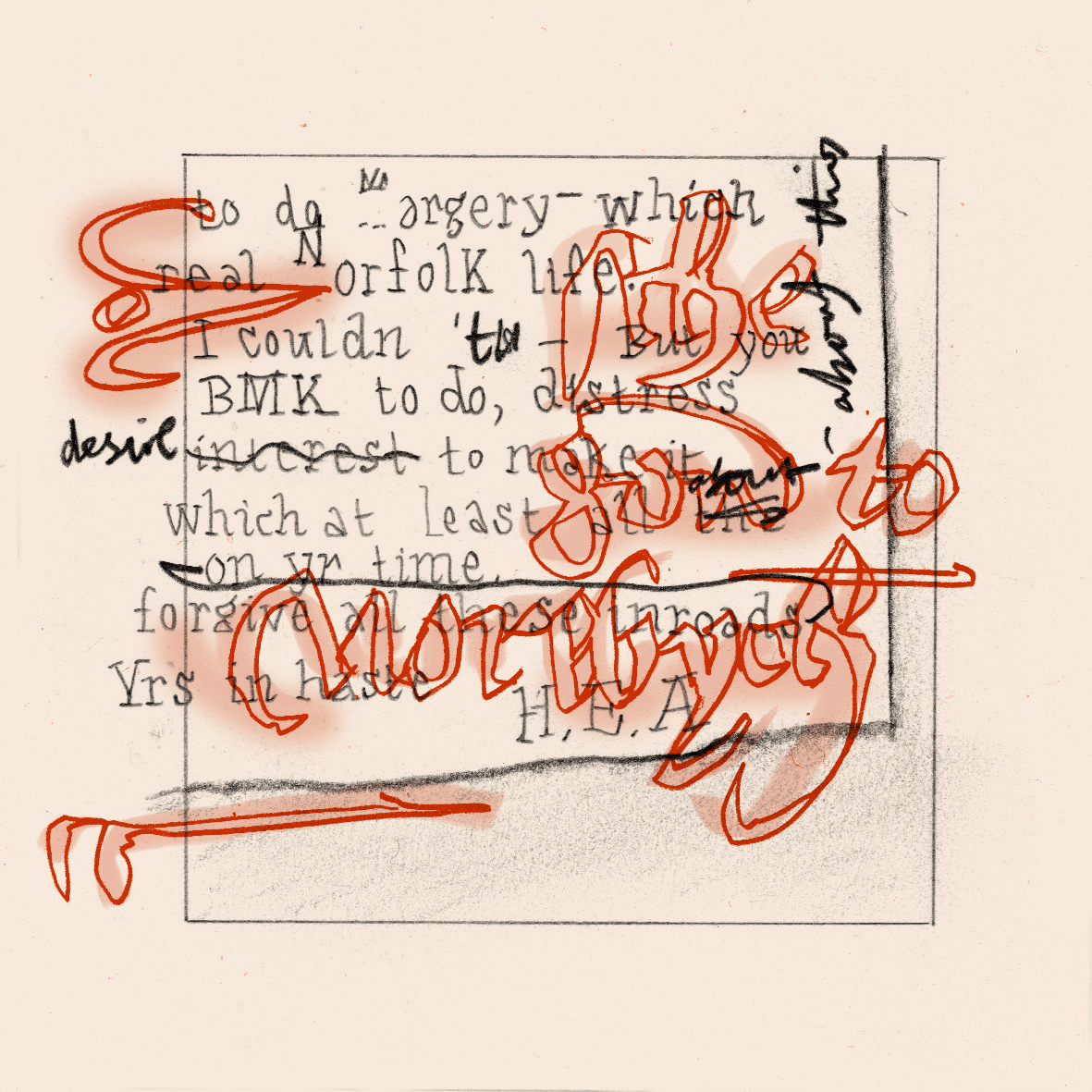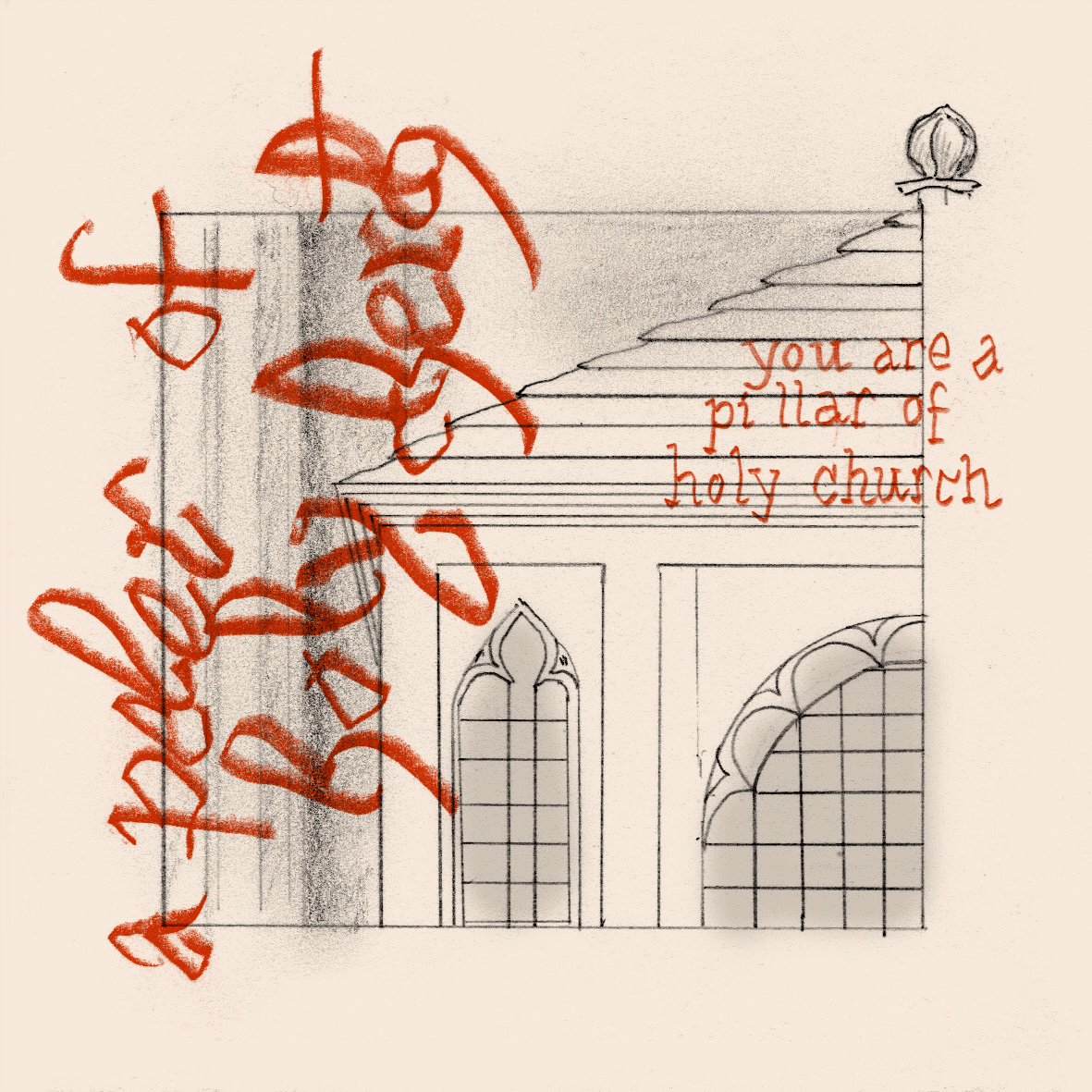This article explores how comics can create multiple histories and foster 'temporal imprecision' in archival research.
Comics are a rich narrative form, combining text, image and layout in their panels and sequences. Despite fragmentation and multimodal complexity, readers navigate the comics page to create larger narratives from discrete panels. These panels are units of space on the page, but they’re also units of time, showing flashbacks and simultaneity, lingering moments and rapid actions. The layout, scale and pacing of these panels allows for flexibility in comics’ representation of time but, as Groensteen suggests in the opening quote, there are other features of comics that create a ‘temporal imprecision’ – something far stranger and worthy of our attention.
As a cartoonist I explore comics’ complex temporalities in my work, and I’m fascinated by Groensteen’s observations. I’m also struck by the similarities between ‘temporal imprecision’ and my experiences of archival research, where past and present sit in awkward tension. In this article I’ll explore how comics might illuminate the processes of archival research, through describing my current work-in-progress: a comic about the 20th century historian Hope Emily Allen, who experienced a dynamic tension between past and present in her scholarship.
The accompanying illustrations are drawn from my work-in-progress for a new comic: Old Things. The pairs of gifs represent chance encounters between people, objects and historical moments in the archive: intertwined fragments of past and present, side by side.


